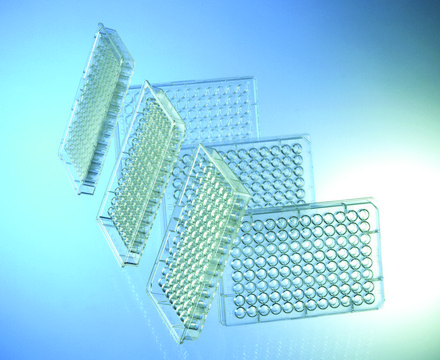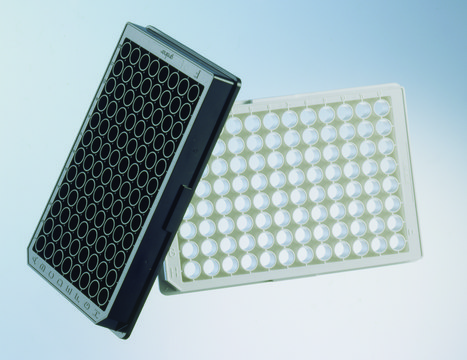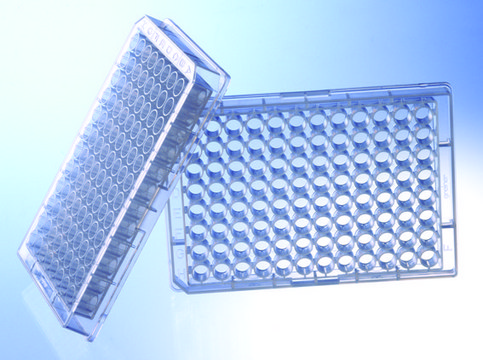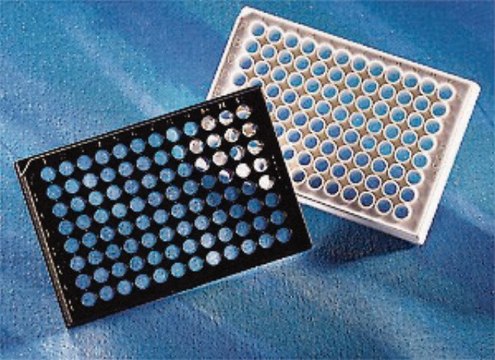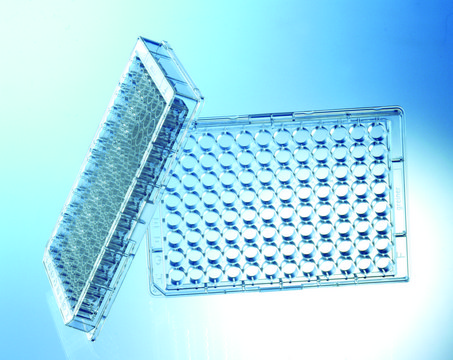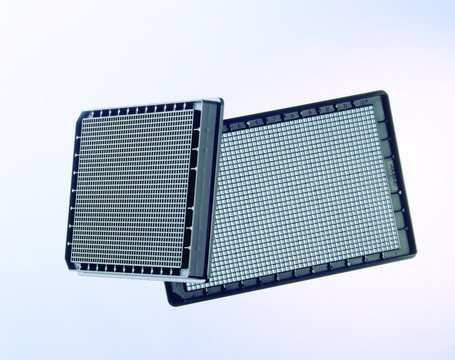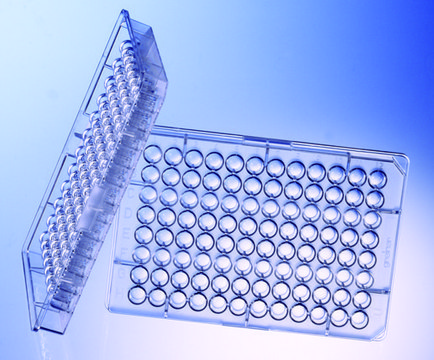GN655090
Greiner CELLSTAR® microplate
96 well, TC treated, black μClear®
Synonym(s):
96 well microplate, 96 well plate, cell culture plate, treated microplate
Sign Into View Organizational & Contract Pricing
All Photos(1)
About This Item
UNSPSC Code:
41122107
Recommended Products
packaging
pack of 32 ea
manufacturer/tradename
Greiner 655090
availability
available only in China
Looking for similar products? Visit Product Comparison Guide
General description
Greiner CELLSTAR® microplates are engineered to elevate cell adhesion through advanced physical surface treatment. These microplates are characterized by high clarity and low autofluorescence, ensuring exceptional visibility and minimal interference during microscopic examinations. Moreover, these microplates enable a reduction of sample volume by up to 50%, thereby providing a significant advantage in experimental setups with sample conservation.
Application
Greiner CELLSTAR® microplate has been used to culture cancer cells, Zenbio 3T3-L1 murine pre-adipocyte cells, bone marrow-derived macrophages (BMDMs). It has also been used for testing cell viability by immunofluorescence.
Features and Benefits
- The physical surface treatment enhances cell adhesion
- DNase, RNase, human DNA free
- Sterile, non-cytotoxic, non-pyrogenic, and stackable
- Alphanumeric well coding and compatible with automated systems
- Microplates with high clarity for optimal microscopic examinations
- The possibility of contamination from carried-over sample material is reduced.
- Has a consistent footprint, as recommended by the American national standards institute (ANSI) (ANSI/SBS 1-2004).
- μClear® bottom and consecutive lot numbering
- Has a lid that permits gas exchange with minimal evaporation
Legal Information
μClear is a registered trademark of Greiner Bio-One GmbH
CELLSTAR is a registered trademark of Greiner Bio-One GmbH
Choose from one of the most recent versions:
Certificates of Analysis (COA)
Lot/Batch Number
It looks like we've run into a problem, but you can still download Certificates of Analysis from our Documents section.
If you need assistance, please contact Customer Support.
Already Own This Product?
Find documentation for the products that you have recently purchased in the Document Library.
Philipp Rabe et al.
Cancer letters, 526, 91-102 (2021-11-24)
Cancer cells display metabolic alterations to meet the bioenergetic demands for their high proliferation rates. Succinate is a central metabolite of the tricarboxylic acid (TCA) cycle, but was also shown to act as an oncometabolite and to specifically activate the
Leandro Henrique de Paula Assis et al.
Frontiers in molecular biosciences, 9, 839428-839428 (2022-04-05)
Statins are successful drugs used to treat hypercholesterolemia, a primary cause of atherosclerosis. In this work, we investigated how hypercholesterolemia and pravastatin treatment impact macrophage and mitochondria functions, the key cell involved in atherogenesis. By comparing bone marrow-derived macrophages (BMDM)
Christopher D Kassotis et al.
Toxicology, 461, 152900-152900 (2021-08-20)
The 3T3-L1 murine pre-adipocyte line is an established cell culture model for screening Metabolism Disrupting Chemicals (MDCs). Despite a need to accurately identify MDCs for further evaluation, relatively little research has been performed to comprehensively evaluate reproducibility across laboratories, assess
Alberto Bresciani et al.
PloS one, 13(3), e0194423-e0194423 (2018-03-20)
Autophagy is a cellular mechanism that can generate energy for cells or clear misfolded or aggregated proteins, and upregulating this process has been proposed as a therapeutic approach for neurodegenerative diseases. Here we describe a novel set of LC3B-II and
Our team of scientists has experience in all areas of research including Life Science, Material Science, Chemical Synthesis, Chromatography, Analytical and many others.
Contact Technical Service